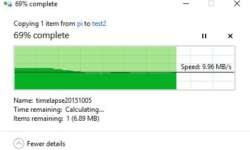Network attached storage (NAS) with Raspberry Pi

There is a Raspberry Pi 3 out there, which is much faster than versions 1 and 2. While latest two are faster than first model, I thought it would be great to give some purpose to first Raspberry Pi model B. We share several computers around the house and sometimes need simple file storage solution to make backups, share and store. Raspberry Pi model B is sufficient for simple Network Attached Storage (NAS) solution. Such network automation setup doesn’t need much processing power to manage the drive. And there is also an option to have a torrent client running 24/7. Another benefit of using Raspberry Pi is low power. Let’s go through all steps on how to set up Network Attached Storage on this Raspberry Pi. You can go with several different solutions for setting up NAS. You could go with cloud solution like Owncloud, which is similar to Dropbox. This might be convenient in many ways, but I would like to have the ability to use the drive as portable media when needed. In that case, I am going to stick with SAMBA server.


